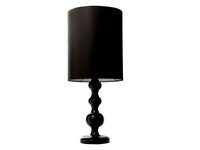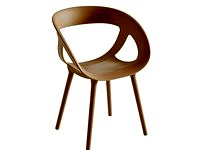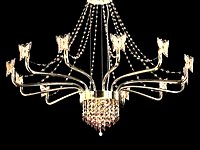The Jill chair is the first collaborative work by Vitra and Alfredo Häberli. Inspired by the early days of plywood moulding, Jill explores the modern boundaries of this technique while offering a surprising level of comfort.
In the 1940s, Charles Eames became the first person to successfully mould plywood into three-dimensional shapes, which enabled body-conscious, organically shaped seating furniture never resulted in a one-piece seat shell. A fascination for the sculptural expressive power of these early plywood prototypes is evident in many of Alfredo Häberli’s designs.
Jill is Alfredo Häberli’s formal homage to that time, but with Vitra, he moves the aesthetic forward to today, incorporating the state of the art in plywood technology in an organically shaped seat shell.
In a patented process, Jill’s veneers are curved until they meet in the middle of the seat. This creates a flexible shell featuring an open transition from the seat to the back, with the thickness of its veneer tapering towards the top of the chair. Two infinite lines, one interior and one exterior, permeate and surround one surface, thus creating a sculptural form that follows the contours of the body, and, thanks to its high degree of flexibility, accommodates it with amazing seating comfort.
The bases for Jill – made of tubular steel, wire, aluminium and wood – are also partially derived from historic prototypes and impart to the chair a decisively contemporary design – particularly in its powerfully expressive colouring, which is colour-matched to complement the fabric covers.
Jill is the first product to emerge from the cooperation between Vitra and Alfredo Häberli. Born in 1964, the Swiss designer who hails from Argentina has been collaborating with prominent companies in designing products and furniture, textiles and interior spaces since founding his own studio in 1991. Quotes from Alfredo Häberli:
“The inspiration for Jill comes from ‘Leg Splint’, which Charles and Ray Eames designed for the US Navy in the 1940s. The fascinating three-dimensionality of the upper part and the tension of the ‘holes’ gives the splint an enormous added sculptural value beyond its function. The ‘Plywood Elephant’ has a similarly fascinating effect, with its facial millings and its plasticity. The diving-board-like projection of Jill’s seat raises the question as to whether it is a shell with a seat or a seat framed by a back band. The different bases and their materiality emphasise the shell explicitly. The tapering of the shell thickness also refers visually to the flexibility and resilience of the seat shell.“
Designer: Alfredo Häberli
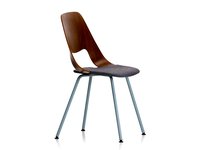
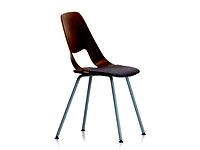
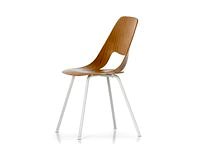





 Switzerland
Switzerland

